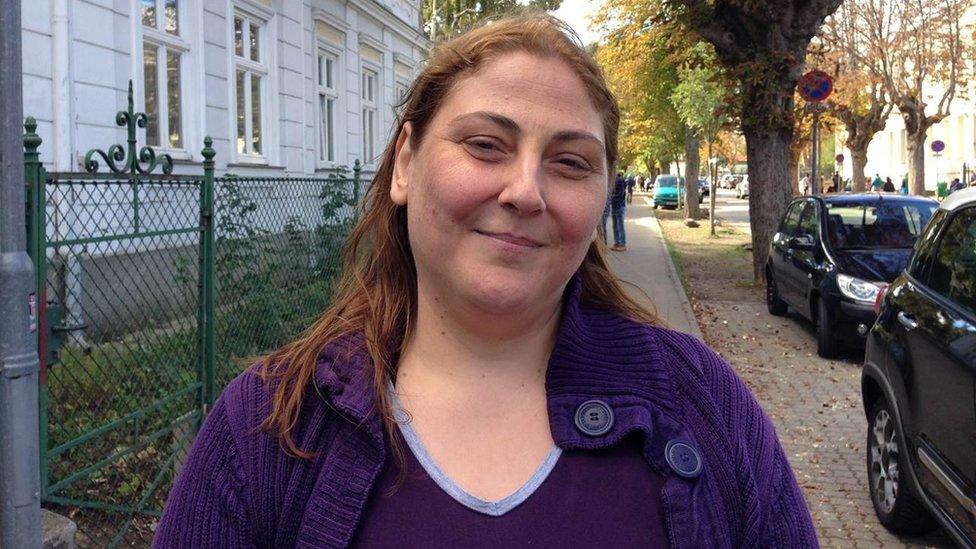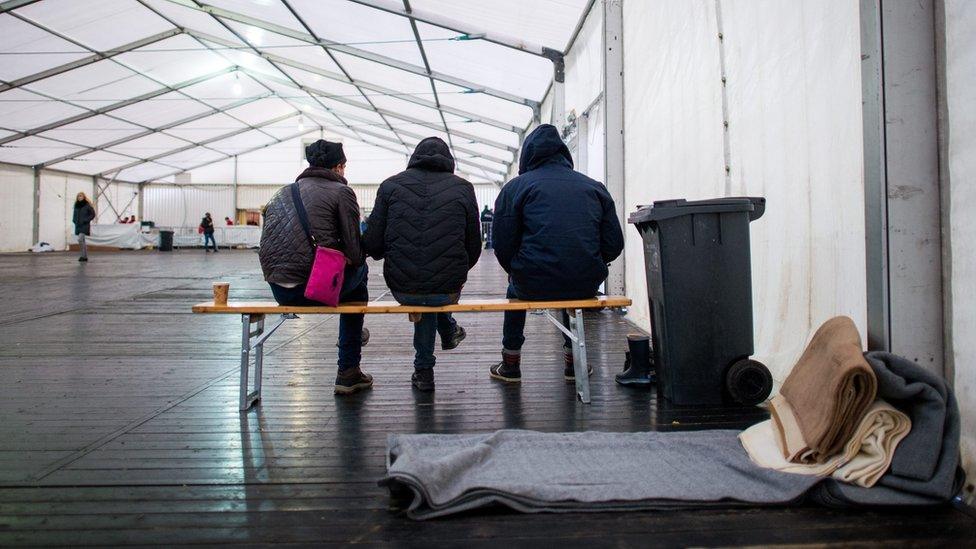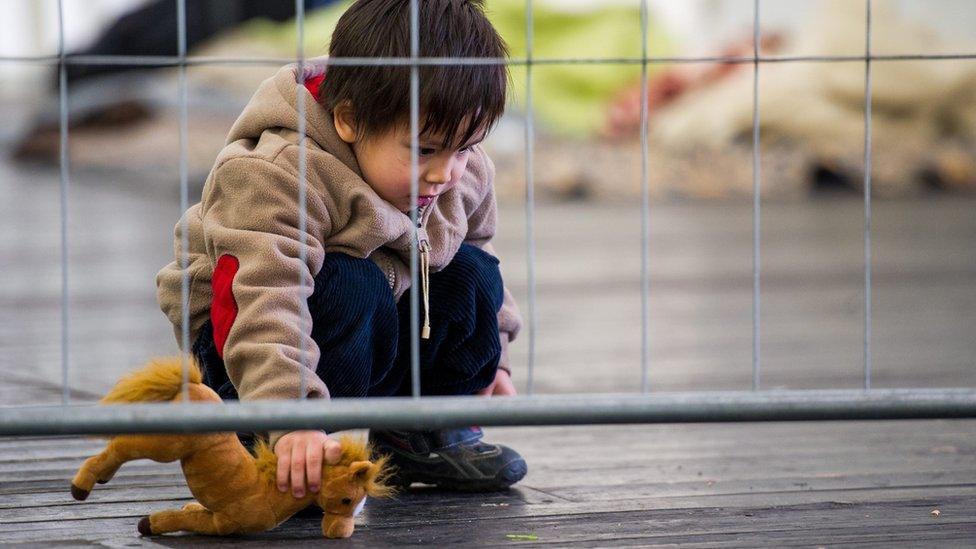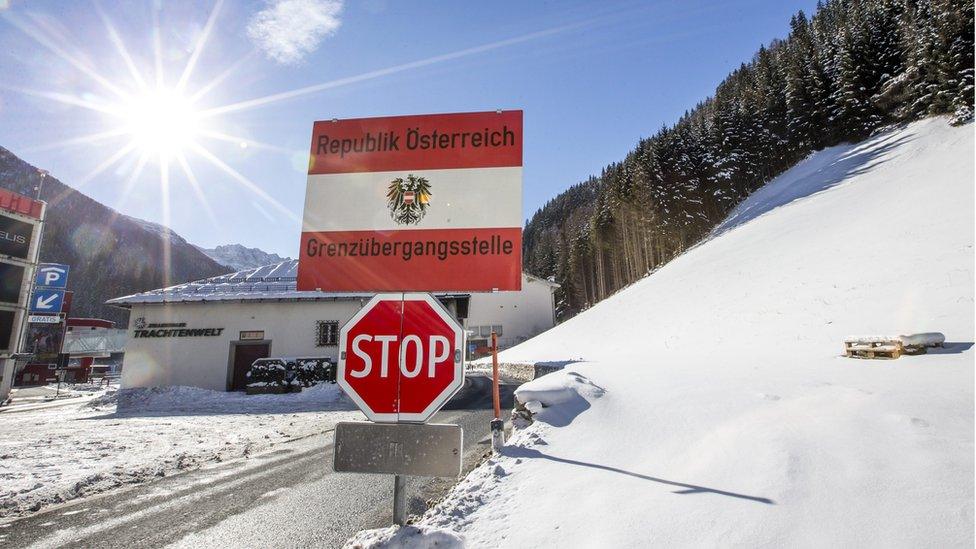Migrant crisis: Austria's Plan B to cap influx of refugees
- Published
Bethany Bell reports from the Austrian town of Schaerding, on the border with Germany
Austria is feeling overwhelmed by the migrant crisis.
It has emerged as a major transit country for refugees and migrants heading through the Western Balkans to Germany and Scandinavia.
But while the vast majority of migrants pass through Austria, a significant number are staying here.
Last year, over 90,000 people applied for asylum in Austria. That represents more than 1% of the population of this small country of 8.5 million.

Latest on the migrant crisis

Some 90,000 people applied for asylum in Austria last year


Iman, from Mosul in Iraq, was one of the new arrivals who applied for asylum. Last autumn, she rushed up to me as I was filming outside Austria's main asylum processing centre at Traiskirchen south of Vienna.
"I want to say the people in Austria, they are like angels," she said loudly, so that the group of Austrian volunteers handing out shoes and clothes nearby could hear what she was saying.

Iman, from Iraq, has applied for asylum in Austria and hopes to remain for the rest of her life
"We lose everything, but the Austrian people, they give us everything we need, she said. "Thank you Austria, thank you Austrian people for letting us live among them."
Far-right pressure
But while many Austrians are sympathetic to the plight of the refugees and have turned out to help the authorities and NGOs in their well-organised aid efforts, there is also growing concern about how many more migrants will arrive here in the coming months.
Support is increasing for the anti-immigrant, far-right Freedom Party. It is in opposition but is currently surging ahead in the opinion polls.
In a fiery new-year speech, Freedom Party leader Heinz-Christian Strache said that "migration is not a human right".
"Whoever thought it was a good idea to allow hundreds of thousands of young men from Arab states to travel into Europe without controls", he hoped they had now changed their minds.
The crisis has put pressure on the Austrian government and caused tensions between the coalition parties. Over recent weeks, ministers from the junior coalition partner, the conservative People's Party, have been calling for a cap on asylum seekers.
Austria should be made "less attractive" to migrants, said conservative Finance Minister Hans Joerg Schelling.
Refugee cap
Until recently, Austria's Chancellor Werner Faymann, a outspoken critic of the restrictive policies of Hungarian Prime Minister Viktor Orban, had resisted the conservatives' demands.
But this week he announced that he wanted to "drastically reduce" the number of people allowed to claim asylum.

German authorities are now sending back dozens of people a day to Austria. Some are migrants refused entry

Some of those sent back to Austria from Germany are refugees seeking asylum in Scandinavia
On Wednesday, the coalition, along with representatives from Austria's provincial and city governments showed a united front, after a summit on asylum.
Austria, the chancellor said, would take measures to reduce refugee numbers.
These include tougher border controls and a cap on the number of people allowed to claim asylum here. Over the next four years, the government plans to limit total asylum claims to about 127,500, which represents 1.5% of the population.
It was not immediately clear what would happen if and when that limit was reached.
'Plan B'
"They don't really know how they will prevent refugees coming across the border," said political analyst Thomas Hofer. "They are happy they could agree on something. They are trying to calm down the atmosphere in Austria."
Legal experts say under current EU asylum law and the Geneva Refugee Convention, a cap on asylum claims by an individual country is not really possible. A decision on sharing out the burden of refugees would need to be taken at EU level.

Border controls are expected to go up on Austria's crossings with Italy
Mr Faymann admitted that this was an "emergency solution, a Plan B", necessary only because the EU was not delivering a Europe-wide response to the refugee crisis.
On Austria's borders, the lack of a European solution is clearly visible.
At Schaerding, near the frontier with Germany, dozens of migrants are sent back to Austria every day. Some are hoping to travel north to Scandinavia and don't want to claim asylum in Germany or Austria. Others are economic migrants from countries such as Iran, who are refused entry to Germany.
Back in Austria they are regarded as illegal immigrants, but the Austrian authorities cannot hold them for more than 48 hours.
"Many of them simply try again to cross into Germany," one policeman told me. "And it's a domino effect - it's happening from Sweden to Greece."